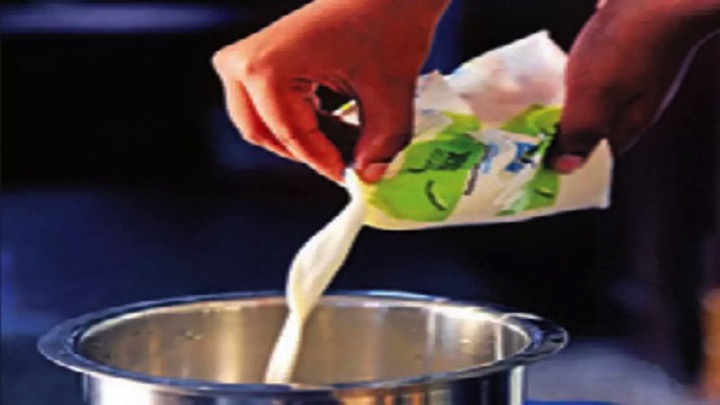India has missed as many as 16.84 million artificial inseminations of cattle and buffaloes during the two years of COVID-19 pandemic. This is likely to have a long-lasting impact on the country’s milk production
It just does not add up.
India, the world’s largest milk producer for over half a century, is struggling with runaway milk prices. In 2021-22, the country accounted for 221 million tonnes—almost a quarter—of the global milk production, says the UN Food and Agriculture Organization (FAO). Yet, milk prices are at an all-time high.
According to the Department of Consumer Affairs, average retail price of milk has increased by 18.08 per cent in the past two years; a litre of milk now costs upwards of Rs 58, as against Rs 49.18 in 2021.
In fact, since 2022-23, milk price rise has been driving overall food inflation in the country. The National Bank for Agriculture and Rural Development (NABARD), an apex regulatory body for regional rural and cooperative banks, states in the May 2023 issue of its publication EcoFocus that the price rise is because of a sharp decline in milk production growth, from 5.3 per cent in 2021-22 to 0.4 per cent in 2022-23.
Amid reports of milk shortage and dairy products like butter and ghee missing from store shelves, Rajesh Kumar Singh, then secretary of the Department of Animal Husbandry and Dairying (DAHD), held a press conference on April 5, 2023.
Singh cited two reasons for this stagnant supply: one, the infectious lumpy skin disease, which has infected 3.2 million cattle and buffaloes across the country in the past year and killed over 0.2 million animals; two, a rebound in consumer demand following the novel coronavirus (COVID-19) pandemic.
An analysis by Down To Earth (DTE), however, shows there is a third reason: a stagnation in the number of high-yield dairy cattle and buffaloes between 2020 and 2022.
During the past two years, as lockdowns and restrictions on movement were imposed in phases to curb the spread of SARS-CoV-2, the country has likely missed 16.84 million artificial inseminations—a vital technology used to accelerate genetic improvement of breeds that have low productivity.
 In artificial insemination technology, semen is collected from a bull with proven superior genetic merits and is stored at ultra-low temperatures (known as cryopreservation) at the country’s more than 99,000 artificial insemination centres.
In artificial insemination technology, semen is collected from a bull with proven superior genetic merits and is stored at ultra-low temperatures (known as cryopreservation) at the country’s more than 99,000 artificial insemination centres.
It is then introduced to the reproductive tract of the female cattle at a time when it is ready for conception (also known as oestrus period that coincides once in 21 days).
In Europe and North America, approximately 80 per cent breeding in dairy cattle is done through artificial insemination. In India, the coverage is 30 per cent, yet the contribution of artificial insemination to improving milk production has been significant.
“Using this technology [artificial insemination] several crossbreeds/strains like Karan Swiss, Karan Fries, Frieswal, Sunandini, Phule-Triveni and Vrindavani cattle with high milk production potential have been developed. These and other crossbreds and upgraded cattle and buffaloes have propelled growth in Indian dairy industry,” states a November 2020 policy paper, titled Livestock improvement through artificial insemination by the National Academy of Agricultural Sciences, New Delhi.
According to the policy paper, there is a direct positive correlation between milk production and artificial insemination observed in the dairy sector of the country.
In all likelihood, this improvement has suffered a major setback during COVID-19. According to the Basic Animal Husbandry & Fisheries Statistics-2014 report, as many as 50 million artificial inseminations were conducted in the country in 2010-11.
Adoption of the technology grew over the next 10 years to reach more than 80 million inseminations in 2019-20, just before COVID-19 hit the country. This is a growth of 5.4 per cent a year, on average.
A back-of-the-envelope calculation shows that at this rate, the country should have conducted 84.65 million artificial inseminations in 2020-21 and another 89.23 million the following year—in other words, 173.88 million artificial inseminations should have been done between 2020 and 2022.
Instead, the country conducted only 157.04 million artificial inseminations, shows the latest Basic Animal Husbandry Statistics 2022 report published on June 23, 2023. This is a gap of 16.84 million.
Given that the average conception rate of artificial insemination in India is 35 per cent, according to the National Dairy Development Board, the 16.84 million missed artificial inseminations amount to 5.88 million missed conception of a high-yield bovine.
Since the probability of getting a female calf is 50 per cent per pregnancy, the 5.88 million missed conception also means that India missed the chance of adding 2.97 million high-yield female cattle to its livestock inventory in 2020-22, and improving its milk production in the next two years.
This loss is despite the fact that between 2020 and 2022, the Union government was implementing the Nationwide Artificial Insemination Programme (NAIP) on a campaign mode, as part of the Rashtriya Gokul Mission scheme that aims for genetic upgradation of all breeds of bovines and enhance their milk productivity using advanced technologies.
As many as 67.67 million artificial inseminations were conducted under NAIP, whose fourth phase ended in May 2023. In other words, in the absence of NAIP, India would have missed a much higher number of artificial inseminations.
Source : Down To Earth- by Shagun Sep 21 2023- This is the first of a four-part series. This was first published as part of the cover story in the 16-31 August, 2023 print edtion of Down To Earth

